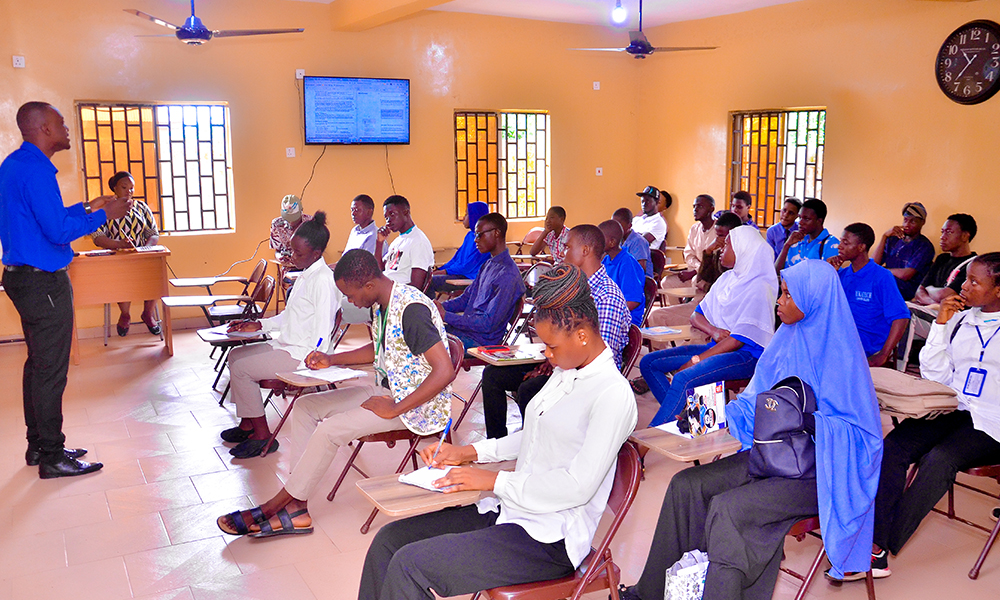
What Will Education Be Like in the Next 50 Years?
In the year 2074, the landscape of education has transformed in ways previously unimaginable. The traditional classroom, with its rows of desks and chalkboards, has become a relic of the past. In its place, a dynamic, immersive learning environment has emerged, driven by cutting-edge technology and a deeper understanding of human cognition.
1. Personalized Learning Journeys
At the heart of this new educational paradigm is personalized learning. Thanks to advanced artificial intelligence, each student's educational journey is tailored to their unique strengths, weaknesses, and interests. AI-driven tutors, known as EduBots, analyze students' learning patterns in real-time, adjusting lessons to optimize understanding and retention. These virtual tutors are not just repositories of knowledge but also empathetic guides, capable of providing emotional support and motivation.
2. Immersive Virtual Classrooms
Classrooms have transcended physical space, becoming boundless virtual reality environments. Students can explore the ancient ruins of Rome, dive into the depths of the Mariana Trench, or even travel through the human bloodstream, all from the comfort of their homes. These immersive experiences make learning tangible and engaging, fostering a deeper connection with the material.
3. Collaborative Global Learning
Education is no longer confined to local institutions. Students collaborate with peers from around the globe, working on projects that address real-world challenges. This global classroom fosters cultural understanding and prepares students for a world where international collaboration is the norm. Language barriers are a thing of the past, thanks to real-time translation devices that facilitate seamless communication.
4. Lifelong Learning and Skill Adaptation
The concept of a fixed education period has evolved. In a rapidly changing world, lifelong learning is essential. Micro-credentials and continuous education programs allow individuals to upskill and reskill throughout their lives. Learning is woven into the fabric of everyday life, with smart devices offering bite-sized lessons during commutes, workouts, or even while cooking dinner.
5. Biometric Feedback and Cognitive Enhancement
Biometric feedback systems monitor students' physiological and cognitive states, providing real-time data to optimize learning conditions. Brain-computer interfaces enhance cognitive abilities, allowing students to absorb information at unprecedented rates. Ethical guidelines ensure these technologies are used responsibly, prioritizing student well-being and consent.
6. Decentralized Education Systems
Traditional education hierarchies have been dismantled in favor of decentralized, community-driven systems. Blockchain technology ensures the integrity and transparency of academic records, while decentralized networks allow for diverse educational content to flourish. Students have the autonomy to choose from a wide array of learning modules, contributing to a more democratic and inclusive educational landscape.
7. Emphasis on Soft Skills and Emotional Intelligence
In addition to academic knowledge, there is a strong emphasis on developing soft skills and emotional intelligence. Courses on empathy, resilience, and ethical decision-making are integral parts of the curriculum. Education aims to nurture well-rounded individuals who are not only intellectually capable but also emotionally and socially adept.
8. Environmental and Sustainability Education
As the world grapples with environmental challenges, education has taken a proactive role in promoting sustainability. Students are educated on the principles of environmental stewardship from a young age, with hands-on projects that encourage sustainable living practices. Schools themselves are models of sustainability, with green architecture and renewable energy sources.
9. Community Integration and Service Learning
Education is deeply integrated into the community, with students engaging in service learning projects that address local needs. This hands-on approach helps students develop a sense of social responsibility and a commitment to community improvement. Schools serve as hubs of community activity, fostering strong connections between students, families, and local organizations.
10. Holistic Assessment Methods
Assessment methods have evolved beyond standardized tests. Holistic evaluation techniques consider a range of factors, including creativity, problem-solving abilities, and interpersonal skills. Digital portfolios allow students to showcase their work and progress over time, providing a comprehensive view of their educational journey.
Assessment methods have evolved beyond standardized tests. Holistic evaluation techniques consider a range of factors, including creativity, problem-solving abilities, and interpersonal skills. Digital portfolios allow students to showcase their work and progress over time, providing a comprehensive view of their educational journey.

